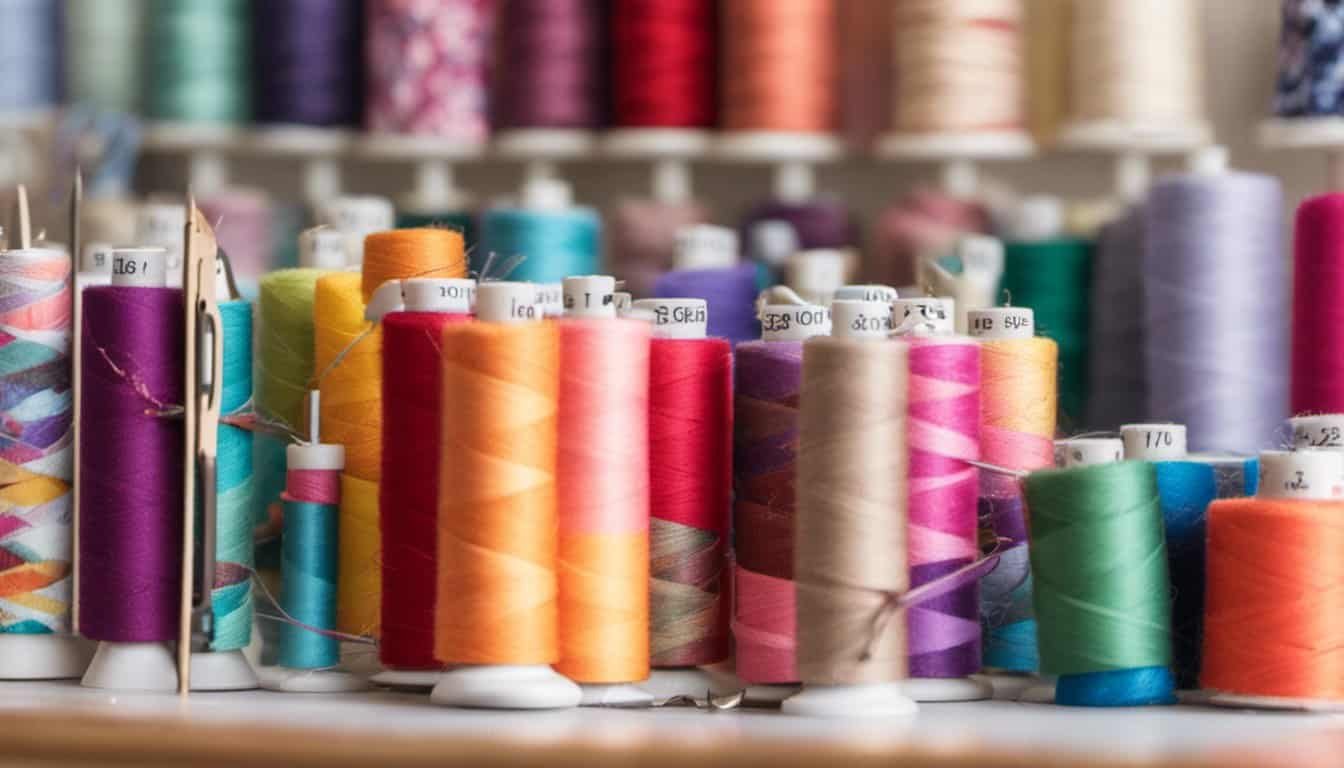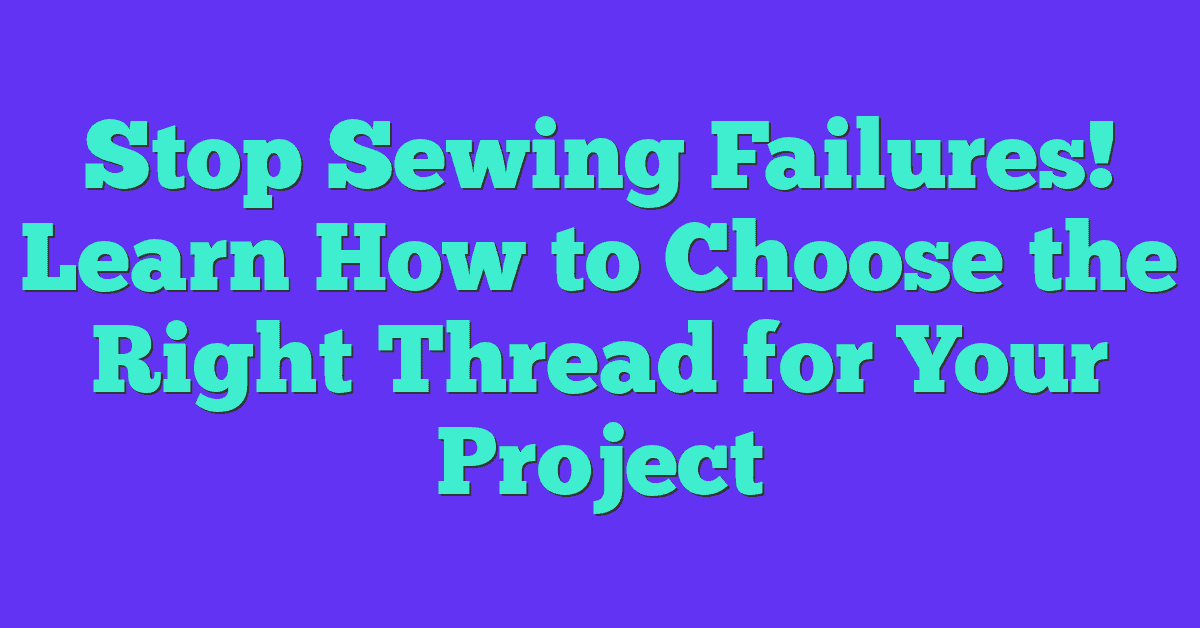Sewing opens up a world of creativity and practicality. Whether you’re looking to mend your favorite clothes, create unique accessories, or embark on larger projects, learning the basics can be incredibly rewarding.
I remember feeling a mix of excitement and uncertainty when I first picked up a needle and thread. But once you get started, sewing becomes a delightful blend of artistry and functionality. Let’s dive into what sewing is all about and how you can begin your own stitching journey.
What Is Sewing?
Sewing involves stitching fabric or other materials together using a needle and thread. It’s a versatile skill that combines creativity with practicality. Whether you’re:
- Mending: Repairing torn clothes or fixing hems extends the life of your wardrobe.
- Creating: Designing and making accessories like bags, scarves, or home decor adds unique touches to your style.
- Customizing: Altering existing garments ensures a perfect fit and personalized look.
- Crafting: Building larger projects, such as quilts or costumes, allows for extensive creative expression.
Essential tools include:
| Tool | Purpose |
|---|---|
| Needle | Poking through fabric to create stitches |
| Thread | Binding materials together |
| Scissors | Cutting fabric accurately |
| Measuring Tape | Ensuring precise dimensions |
| Sewing Machine | Automating stitching for efficiency |
Understanding these basics allows you to tackle various sewing projects confidently. Mastering sewing opens doors to endless possibilities in both fashion and home improvement.
Essential Sewing Tools
Having the right tools sets the foundation for successful sewing projects. Here are the essential tools every beginner should have.
Choosing the Right Sewing Machine
Selecting the right sewing machine depends on your project needs and budget. Evaluate features like stitch options, speed control, and durability first, then match them to the types of projects you plan to undertake.
Must-Have Tools for Beginners
- Needles: Various sizes and types cater to different fabrics.
- Thread: Polyester and cotton threads suit most sewing projects.
- Scissors: Invest in fabric scissors and small snips for precision cuts.
- Measuring Tape: Accurate measurements ensure proper fit.
- Pins and Pin Cushion: Secure fabric layers before stitching.
- Seam Ripper: Quickly remove mistakes and adjust seams.
- Marking Tools: Chalk or fabric pens help outline patterns.
- Iron and Ironing Board: Pressing fabric enhances sewing accuracy.
Fundamental Sewing Techniques
Understanding fundamental sewing techniques empowers me to tackle a variety of projects confidently. These techniques form the backbone of both hand and machine sewing.
Hand Sewing Basics
Hand sewing involves essential stitches that ensure your projects hold together securely. I use the following techniques:
- Running Stitch: Ideal for simple seams and gathering fabric. It consists of evenly spaced up and down stitches.
- Backstitch: Provides strong, durable seams. I start with a small backward stitch, then move forward, overlapping each stitch.
- Slip Stitch: Perfect for hemming and invisible seams. It hides stitches inside the fabric by catching only the edges.
- Overcast Stitch: Prevents fabric fraying. I use this stitch along raw edges to secure them.
Mastering these stitches allows me to make precise repairs, create decorative details, and assemble garments without a sewing machine.
Machine Sewing Techniques
Machine sewing speeds up the process and offers a variety of stitches for different purposes. Key techniques include:
- Straight Stitch: The most basic stitch for seams and construction. I adjust the stitch length for different fabrics.
- Zigzag Stitch: Provides flexibility and prevents fraying on stretch fabrics. It’s useful for edges and applique.
- Buttonhole Stitch: Automates buttonhole creation with consistent sizing and durability. I select the appropriate width and length settings.
- Blind Hem Stitch: Creates an invisible hem by only showing a few stitches on the outside. It’s ideal for professional-looking finished edges.
Using these machine techniques enhances my efficiency and expands the range of projects I can complete with precision and ease.
Starting Your First Project
Starting my first sewing project was both thrilling and a bit intimidating. Here’s how I navigated the initial steps to ensure a smooth experience.
Selecting Simple Projects
Choosing the right project sets you up for success. I began with:

- Pillowcases: Easy measurements and straight stitches make them ideal for beginners.
- Tote Bags: Minimal seams and straightforward construction help build confidence.
- Simple Skirts: Introduces pattern reading and basic garment assembly.
- Scarves: Quick to complete and great for practicing fabric handling.
These projects required essential skills without overwhelming complexity.
Step-by-Step Guide
Following a structured approach made my first project manageable:
- Choose a Pattern: I selected a basic pattern with clear instructions and minimal pieces.
- Select Fabric: Opted for medium-weight cotton, perfect for beginners.
- Gather Supplies: Included my sewing machine, scissors, measuring tape, and thread.
- Prepare the Fabric: Washed and ironed the fabric to prevent shrinkage and ensure smooth sewing.
- Cut the Fabric: Accurately cut the fabric pieces using the pattern as a guide.
- Assemble the Pieces: Sewed the pieces together following the pattern instructions, starting with simple seams.
- Finish Edges: Used a zigzag stitch to prevent fraying and neatened the edges.
- Final Touches: Added any necessary buttons or decorative elements as specified by the pattern.
By breaking down the process into these steps, I completed my first project with confidence and satisfaction.
Tips for Beginners
- Start with simple projects. I recommend choosing items like pillowcases or tote bags to build your skills without feeling overwhelmed.
- Learn to read patterns. I find that understanding patterns ensures accuracy and helps you follow instructions correctly.
- Organize your workspace. I keep my tools and materials in order to enhance efficiency and reduce mistakes.
- Invest in quality tools. I believe good needles, scissors, and a reliable sewing machine make the process smoother and more enjoyable.
- Practice basic stitches. I suggest mastering stitches such as the running stitch and straight stitch to lay a strong foundation for more complex projects.
- Measure accurately. I ensure precise measurements to prevent fitting issues and make sure projects turn out as intended.
- Choose the right fabric. I select fabrics appropriate for my skill level and project type to make sewing easier.
- Take your time. I advise working methodically since rushing through steps can lead to errors.
Conclusion
Starting my sewing journey has been incredibly rewarding. Every project I take on feels like a new adventure, blending creativity with a sense of accomplishment. I love seeing pieces come to life from just fabric and thread.
I’m excited to keep learning and exploring what’s possible with sewing. If you’re thinking about giving it a try, go for it. Grab your tools and enjoy the process – the world of sewing is full of endless possibilities and so much joy.
Stop Sewing Failures! Learn How to Choose the Right Thread for Your Project »
Happy stitching!

















